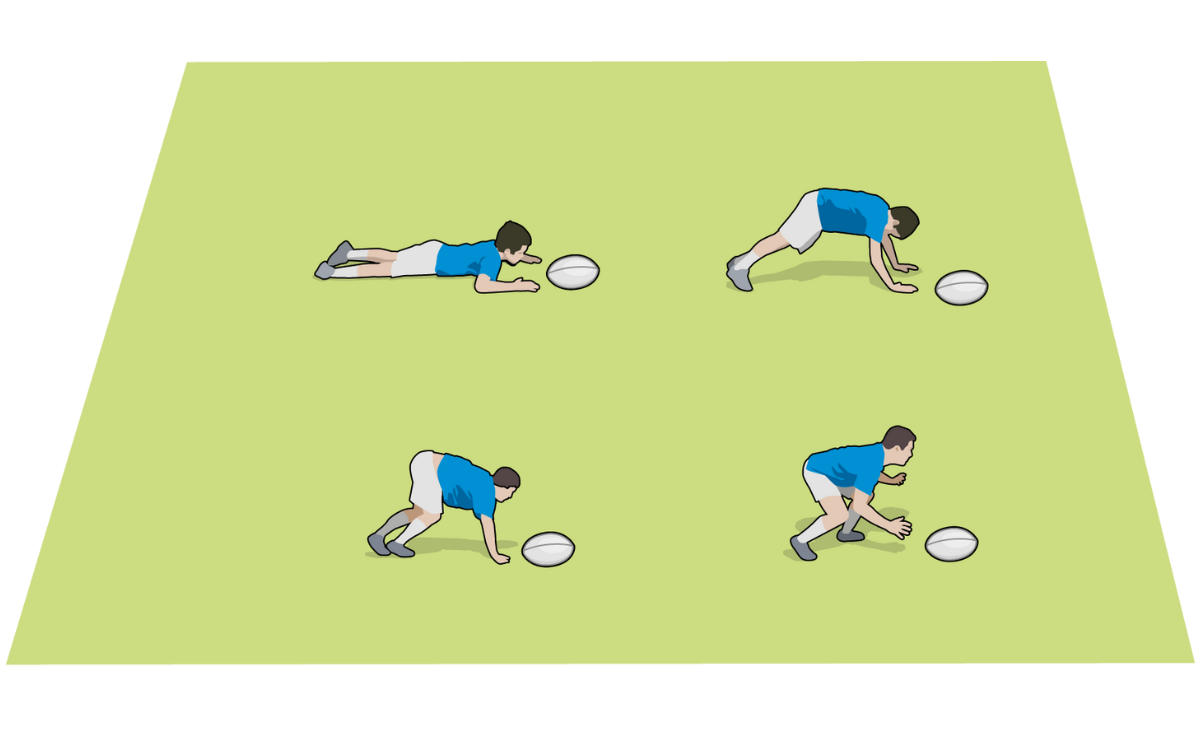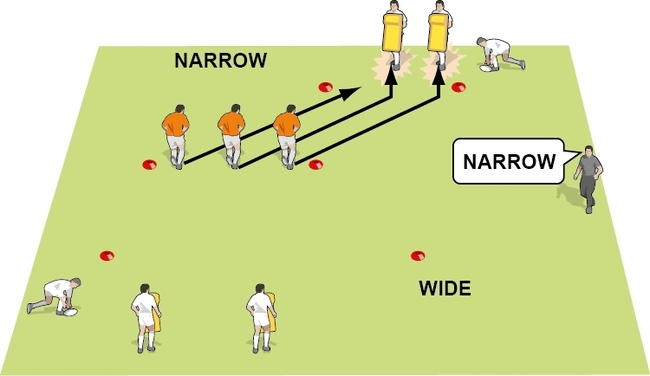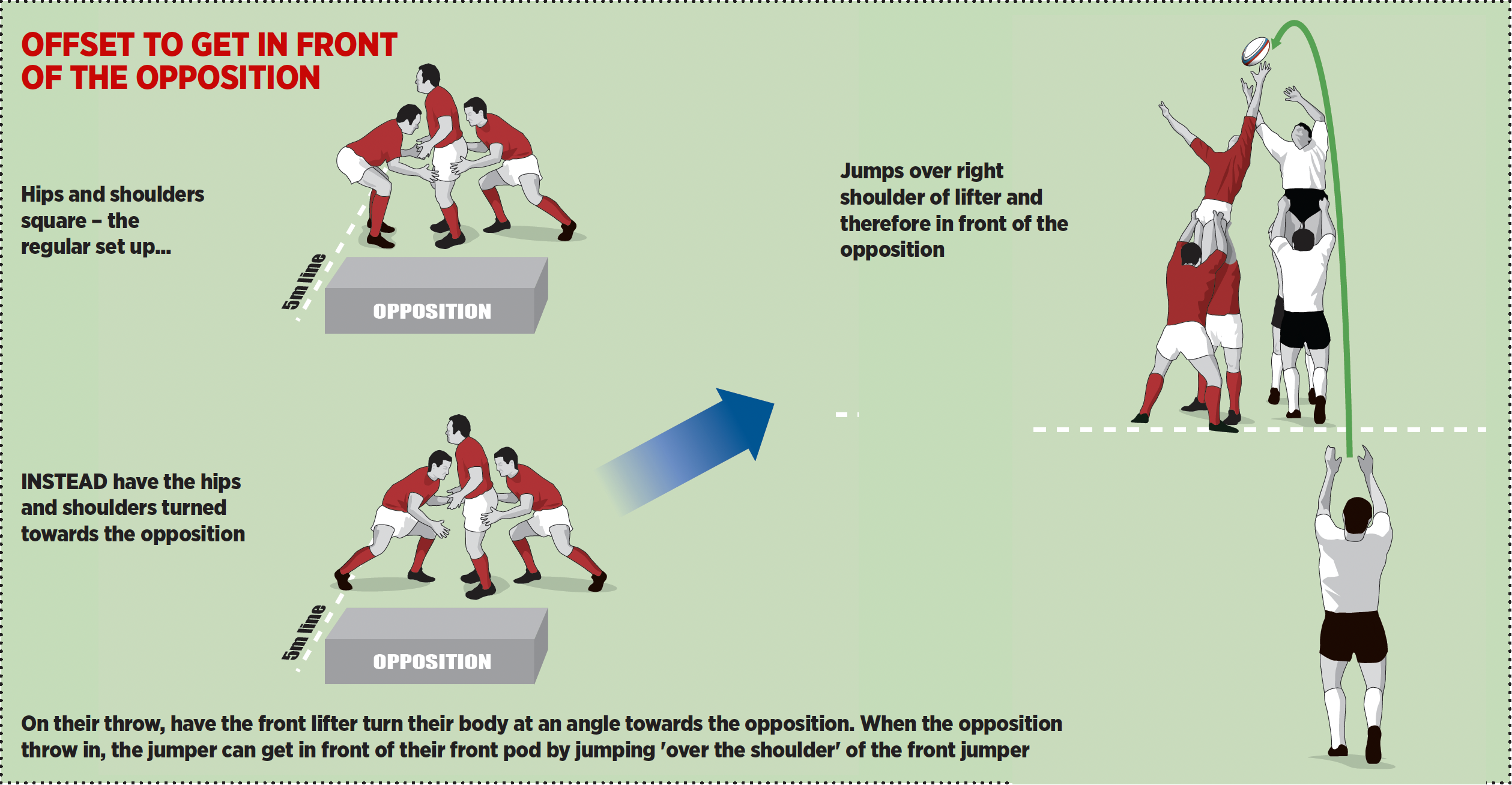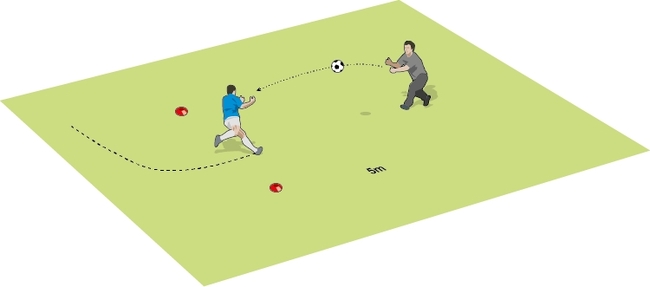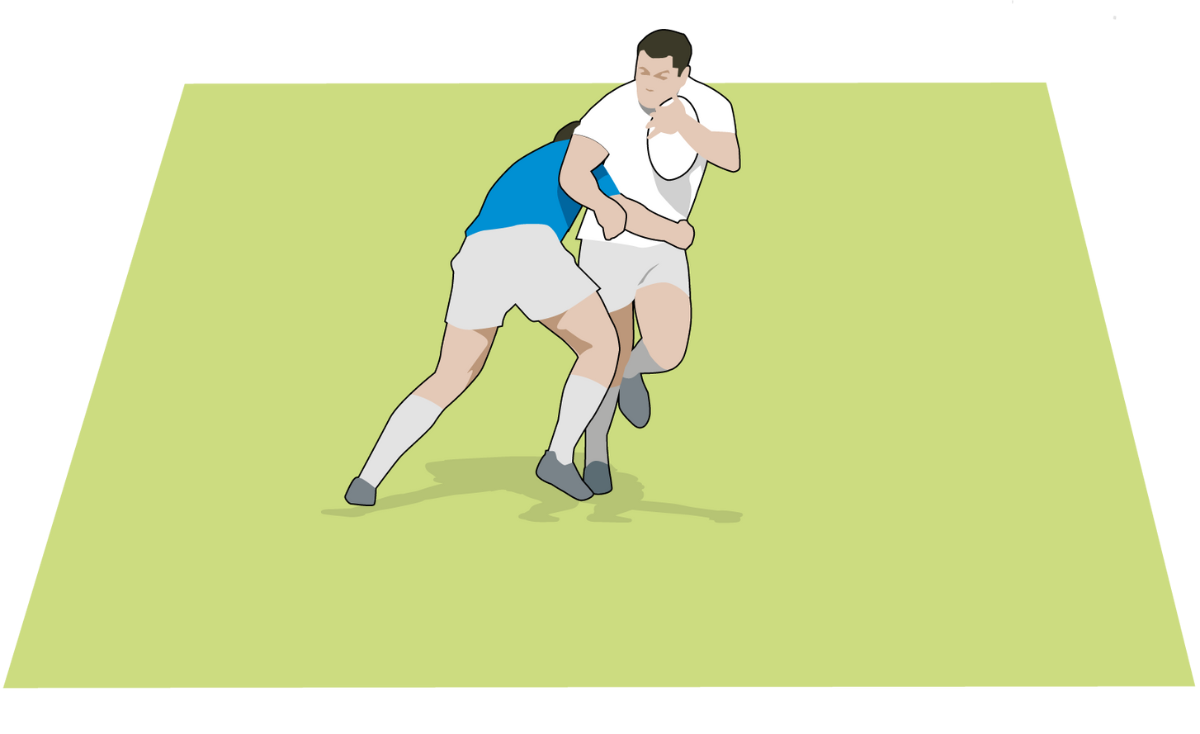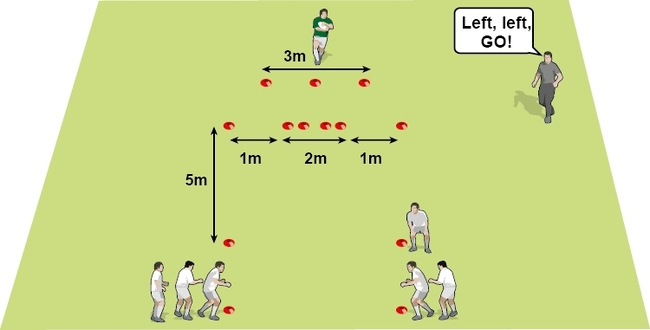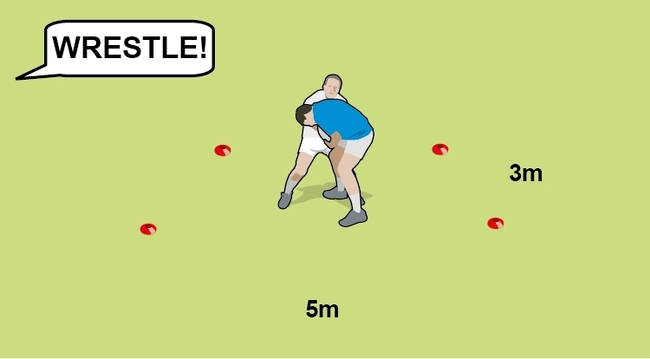Soak up tackles
This session will help your players in their reading of situations and not feel afraid to give up ground, as long as the tackle is made.
WHY USE IT
A tackler sometimes must accept they cannot ‘win’ the contact, but still has to bring the ball carrier to ground effectively.
set up
A 5m wide, 7m long box. A 15m box for the game.
HOW TO PLAY
ACTIVITY: A feeder, with a ball, starts by a ruck pad, with an attacker about 2m to the side and a defender behind the ruck pad. The ball is fed into the attacker, who aims to beat the defender and score at the far end. The defender has to make sure they tackle the attacker before they make it that far.
DEVELOPMENT: Add in another attacker, who is just behind the feeder. Add in another defender. The feeder can pass to either player, who can, if they want, offload the ball. The defenders can use any sort of tackle to stop the attack reaching the other end.
GAME SITUATION: Five attackers start at one end of the box, with four defenders in the middle of the box and a ruck pad-holder at the side (around the middle), with a ball. The attack aims to score at the far end. Allow no rucks, but tackled players can offload. The defence has around 7m space to soak up the pressure and prevent a try.
COACHING POINTS
- Tackler: Get in front of the ball carrier and use their momentum to take them down.
- Shape your body to soak up the tackle, so they fall over you rather than you bouncing off with the impact.
Thank you for reading
to enjoy 3 free articles,
our weekly newsletter, and a free coaching e-book
Or if you are already a subscriber, login for full access
Newsletter Sign Up
Coaches Testimonials

Gerald Kearney, Downtown Las Vegas Soccer Club

Paul Butler, Florida, USA

Rick Shields, Springboro, USA

Tony Green, Pierrefonds Titans, Quebec, Canada
Subscribe Today
Be a more effective, more successful rugby coach
In a recent survey 89% of subscribers said Rugby Coach Weekly makes them more confident, 91% said Rugby Coach Weekly makes them a more effective coach and 93% said Rugby Coach Weekly makes them more inspired.
Get Weekly Inspiration
All the latest techniques and approaches
Rugby Coach Weekly offers proven and easy to use rugby drills, coaching sessions, practice plans, small-sided games, warm-ups, training tips and advice.
We've been at the cutting edge of rugby coaching since we launched in 2005, creating resources for the grassroots youth coach, following best practice from around the world and insights from the professional game.




